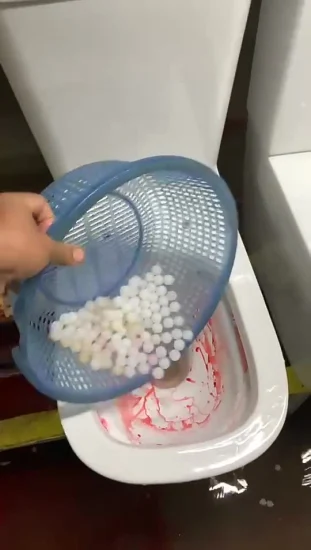Is it Acceptable to Flush Food Down the Toilet?
Is it Acceptable to Flush Food Down the Toilet?
Blog Article
We've discovered this post on What Can Happen If You Flush Food Down the Toilet? below on the web and accepted it made perfect sense to write about it with you here.

Intro
Many people are often confronted with the issue of what to do with food waste, particularly when it involves leftovers or scraps. One usual concern that develops is whether it's fine to flush food down the bathroom. In this write-up, we'll explore the reasons why people may think about purging food, the consequences of doing so, and alternative techniques for correct disposal.
Reasons why individuals might think about flushing food
Lack of understanding
Some individuals might not know the prospective damage caused by purging food down the commode. They might wrongly believe that it's a harmless practice.
Comfort
Flushing food down the toilet might look like a quick and very easy remedy to disposing of undesirable scraps, specifically when there's no neighboring trash bin offered.
Idleness
In many cases, individuals may merely choose to flush food out of large laziness, without taking into consideration the effects of their actions.
Repercussions of flushing food down the commode
Ecological influence
Food waste that winds up in rivers can contribute to air pollution and injury marine communities. In addition, the water made use of to purge food can stress water sources.
Pipes problems
Flushing food can result in stopped up pipes and drains, causing costly pipes repairs and inconveniences.
Types of food that should not be purged
Coarse foods
Foods with fibrous textures such as celery or corn husks can obtain tangled in pipes and cause obstructions.
Starchy foods
Starchy foods like pasta and rice can soak up water and swell, causing obstructions in pipelines.
Oils and fats
Greasy foods like bacon or food preparation oils should never ever be flushed down the commode as they can solidify and trigger clogs.
Appropriate disposal approaches for food waste
Making use of a garbage disposal
For homes outfitted with garbage disposals, food scraps can be ground up and flushed through the plumbing system. However, not all foods are suitable for disposal in this manner.
Recycling
Specific food packaging materials can be reused, reducing waste and minimizing ecological influence.
Composting
Composting is an environment-friendly method to take care of food waste. Organic products can be composted and utilized to improve soil for horticulture.
The relevance of appropriate waste management
Lowering environmental injury
Proper waste monitoring methods, such as composting and recycling, aid reduce air pollution and preserve natural resources for future generations.
Protecting plumbing systems
By preventing the method of flushing food down the commode, property owners can stop costly pipes fixings and preserve the stability of their pipes systems.
Final thought
To conclude, while it might be alluring to purge food down the commode for benefit, it is necessary to recognize the prospective repercussions of this action. By taking on appropriate waste monitoring practices and throwing away food waste properly, people can contribute to healthier pipes systems and a cleaner environment for all.
FLUSH FOOD DOWN THE TOILET?
FLUSHING FOOD CAN CAUSE BLOCKED DRAINS IN YOUR HOME
All of the plumbing fixtures in your home are connected to the same sewer pipe outside of your home. This outdoor sewer pipe is responsible for transporting all the wastewater from your home to the Council sewer mains. Even small pieces of food that go down the kitchen sink can cause problems for your sewer. It should therefore be obvious that flushing larger bits of food, such as meat, risks a clog in either the toilet itself or the sewer pipes. Flushing greasy food is even more problematic because oil coagulates when it cools, coating the interior lining of your pipes.
THE TOILET IS NOT A BIN
Food isn’t the only thing that people shouldn’t be flushing down the toilet. People use the toilet to dispose of all kinds of things such as tampons, makeup wipes, dental floss, kitty litter and even underwear. Water goes to great lengths to educate residents about the high costs and stress placed on wastewater treatment systems simply from people flushing the wrong stuff down the toilet. It costs taxpayers millions of dollars each year, and homeowners thousands in blocked drain repairs.
FLUSHING FOOD IS A WASTE OF WATER
Flushing food is a waste of our most precious resource - water. In June this year Level 1 water restrictions were introduced to protect water supply from drought conditions. Much of New South Wales continues to be affected by prolonged drought with recent figures revealing up to 97 per cent of the state remains in drought. Depending on whether you have a single or dual flush toilet, every single flush uses between five and 11 litres of water. In the current climate this is a huge amount of water to be wasting on flushing food that should be placed in the bin (or better yet, the compost).
https://www.jabplumbingsolutions.com.au/blog/can-you-flush-food-down-the-toilet

Do you appreciate more info about Think Twice Before Flushing Food Down Your Toilet? Put a short review directly below. We would be delighted to listen to your responses about this review. We hope that you visit us again before long. Those who enjoyed our blog post kindly make sure you remember to pass it around. Thanks for going through it.
Information Report this page